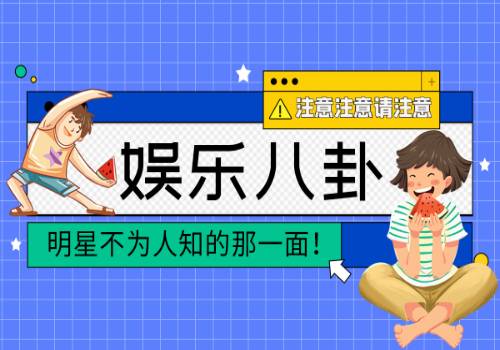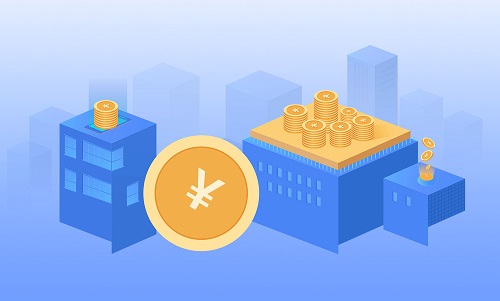世界文化周
GLOBAL AWARENESS WEEK
向上滑动阅览英文
 (资料图)
(资料图)
Scroll up forfull contents in English
In the first week of the new semester, HDBJ Secondary G6-G9 students had Global Awareness Week, an interdisciplinary, inquiry unit. Every year, the theme of our Global Awareness Week is closely related to the current world: in the first year, students studied the U.N. Sustainable Development Goals (SDG), learning the importance of different goals, including No Poverty, Clean Water and Sanitation, and their impact on the whole world. Last year, through the theme of "Public Service", students participated in a series of activities from "waste recycling", "advocating the use of environmentally friendly materials" to "public publicity" in various disciplines, calling on the whole society to pay attention to environmental pollution issue.
This year, all HDBJ students voted on which SDG they would like to study in depth, and they chose "Zero Hunger", UN SDG #2. Once the goal was decided, our international teachers developed a one-week, project-based unit of inquiry for all of our students to engage with.
Under the guidance of teachers, our students conducted small group, in-depth research on different countries’ approaches to achieving the UN goal. Topics for investigation included the current state of hunger in the country, possible reasons for the current situation, efforts made by the government to address the issue, and the actions we can take in the future. Finally, students were tasked with the challenge of identifying ways that we at HDBJ Secondary can work to better address this global issue. This inquiry culminated in students making a poster of their research results, as well as publicly presenting a PowerPoint to summarize their findings, analysis, and suggestions for our community.
Next, let us review the learning process and research results together!
Information Research
At the beginning of the project, the students needed to better understand the goal and research information on a country of their choosing. However, in the face of the extensive resources available on the internet, how did our students locate the information they wanted in a quick and accurate way? Our first step was to help our students how to best use technology to research accurate information.
Searching for keywords on a search engine is only the first step. Next, under the guidance of our teachers, students judged whether the information obtained is correct or reliable by further distinguishing the timeliness of the information, the authoritativeness of the author, and the relevance of the publishing group. Students then promptly recorded the source of the information they chose to include in their work in case they needed to verify or cite it later.
The GAW lessons were scaffolded for our students, and all of our international teachers, and some of our Chinese national teachers, all worked with our students at each phase of the project. Within groups, roles were divided among students: some students were responsible for research; some worked on recording information sources while other students summarized problems they encountered and asked for help from peers or teachers when appropriate. Soon, the students collected valid and reliable information they needed for the next step: presenting information in different formats/media.
Making a Poster
Facing a blank poster board, the challenge for our students at this stage was to refine, summarize, and integrate the huge amount of information they had gathered into a clear, neat, and engaging poster.
Under the guidance of our teaching team, students systematically learned ways to make a beautiful poster: from layout to graphics, text style to overall readability.
It’s Presentation Time
It"s finally time for the presentations! Each group took turns to present within their classes to present their research findings and analysis with the teachers and classmates. Within each class, two groups were selected to present to the entire grade. Finally, one group per grade level was selected, by student vote, as the best 2022-2023 GAW presentation.
What We Learned
Through interdisciplinary research and study, the students learned that hunger is not just a concern in developing countries - hunger still exists in many developed countries, and many countries are even facing serious food crisis. The causes are closely related to the climate, politics, economy of the country.
The students also undertook in-depth analysis of the decisions and efforts made by individual national governments and the World Food Program to solve the hunger problem based on the actual situation of each country studied. Furthermore, students also put forward a proposal from their own perspectives, indicating how HDBJ Secondary, and each HDBJ student, can live a green and sustainable life to help address this larger, global issue. For example: students could set up a campus growing area, donate excess food to food banks, and more.
This project embodies the awareness and reflection of students" global awareness in their daily life, and it is also the way for students to grow up to be responsible citizens of the world. Looking at the confident and excellent students on the stage, we believe that they will make the world a better place!
This week’s study continued to spark our students" global awareness and mindsets, and also developed their skills of independent exploration and teamwork. With this type of disciplined inquiry, investigation and engagement, our young students will become the masters of tomorrow"s world stage!
新学期的第一周,北京赫德金盏校区中学部G6-G8的同学们进行了世界文化周 (Global Awareness Week) 的探索学习。
每年,我们世界文化周的主题都与当前世界紧密相连:第一年,同学们接触了解联合国可持续发展目标(Sustainable Development Goals,简称SDGs)学习包括消除贫困、清洁水与卫生在内的不同目标的重要性,并且对整个世界的影响;
接下来的一年,同学们通过“公共服务”这一主题,在各个学科的学习中,围绕“废品循环利用”“提倡环保材料使用”“公共宣传”等角度,参与了一系列创意实践课程,呼吁全社会关注环境污染问题。
今年国际文化周的学习主题,是由学生们自行投票来决定的。孩子们选择了联合国可持续发展目标#2“零饥饿”作为他们今年深入研究的项目。确定了学习目标之后,北京赫德中学部的国际教师们专门针对这一主题,共同开发了一个为期一周的项目研究课程,让所有的同学们都可以深入地参与其中。
在老师的指导下,我们的学生以小组形式深入研究了不同国家为了实现联合国这一目标所采用的方法和途径,调查的主题包括该国目前的饥饿状况、导致这一现状的可能原因、政府为解决问题所做的努力以及我们未来可以采取的行动等。
最终,学生们的任务是总结出北京赫德可以采取哪些方式或行动来更好地帮助解决这一全球性问题。同学们需要将自己的研究成果制作成一张海报,并且通过一个公开的演讲,与赫德社区分享他们的研究发现、分析成果以及最终对赫德社区的建议。
下面,让我们一起回顾一下同学们的学习过程以及研究成果吧!
你真的会检索信息吗?
Information Research
项目之初,同学们需要对他们所选择国家的联合国目标以及研究信息有一个更全面的了解,因此,同学们面临着大量的检索与研究工作,可是,面对海量的资源,我们的同学们是如何又快又准确地定位到自己想要的信息呢?我们的第一步便是教会同学们如何准确地获得信息。
在搜索引擎上通过关键词搜索只是第一步,接下来,在老师的引导下,同学们通过进一步分辨信息的时效性、作者的权威性以及发布团体的相关性等,来判断获取的信息是否真实可靠;紧接着,孩子们会及时记录下已采用信息的来源,为日后需要核实或引用节省时间。
世界文化周的课程是北京赫德中学部为学生们专门搭建的,我们所有的国际教师和部分中国老师们在项目的各个阶段与同学们一同工作研究。
在做项目时,每个小组内成员分工明确,各司其职。有的同学负责检索,另外的人员及时记录信息源,还有的同学负责总结问题和困难,适当的时候寻求同伴或者老师的帮助。很快,学生们收集到了足够的有效可靠的信息,接下来就该用不同的形式/媒介将它们呈现出来了!
优质海报是如何诞生的?
Making a Poster
面对空白的海报板,同学们这个阶段的难题就是如何将搜索到的巨量信息提炼、总结、整合到一张有限的海报上,并且还能做到重点突出、排版清晰、设计吸睛。
在我们教学团队的指导下,学生们系统地学习了制作精美海报的方法:从布局到图形、文字风格到整体可读性。
左右滑动查看更多学生作品
未来的领袖登上舞台!
It"s Presentation Time!
终于到了展示的时间了!每个小组轮流在课堂上向老师和同学们展示他们的研究成果与结论分析。之后,每个班级推选两个小组再次向整个年级进行展示。最后,学生们集体投票,每个年级评选出一个小组作为2022-2023年度世界文化周最佳演示!
我们的收获
What We Learned
通过跨学科研究学习,同学们知道了饥饿问题并非只在发展中国家存在,当下许多发达国家依然存在饥饿的难题,许多国家甚至面临着严重的食物危机。而其中的原因,与气候、政治、经济等息息相关。
学生们还根据所研究国家的实际情况,深入分析了各国政府和世界粮食计划署为解决饥饿问题所做的决策和努力。此外,学生们还从自身的角度提出了提案,包括北京赫德社区的每一个人如何通过自身绿色和可持续的生活,来帮助缓解这个全球性问题。例如:学生可以建立校园种植区,将多余的食物捐赠给食物银行等等。
这是孩子们全球意识在日常生活的体现,这也是孩子们成长为负责任的世界公民的必经之路。看着舞台上落落大方,风采飞扬的同学们,让我们不由得相信这些未来的主人翁会让世界变得更加美好!
此次世界文化周的学习经历持续启迪着学生们的全球意识和思维方式,同时也培养了他们独立探索和团队合作的技能。北京赫德通过深入探究的精品项目制学习,助力今天的小小少年成为明天世界舞台的主人!
关键词:




















 营业执照公示信息
营业执照公示信息